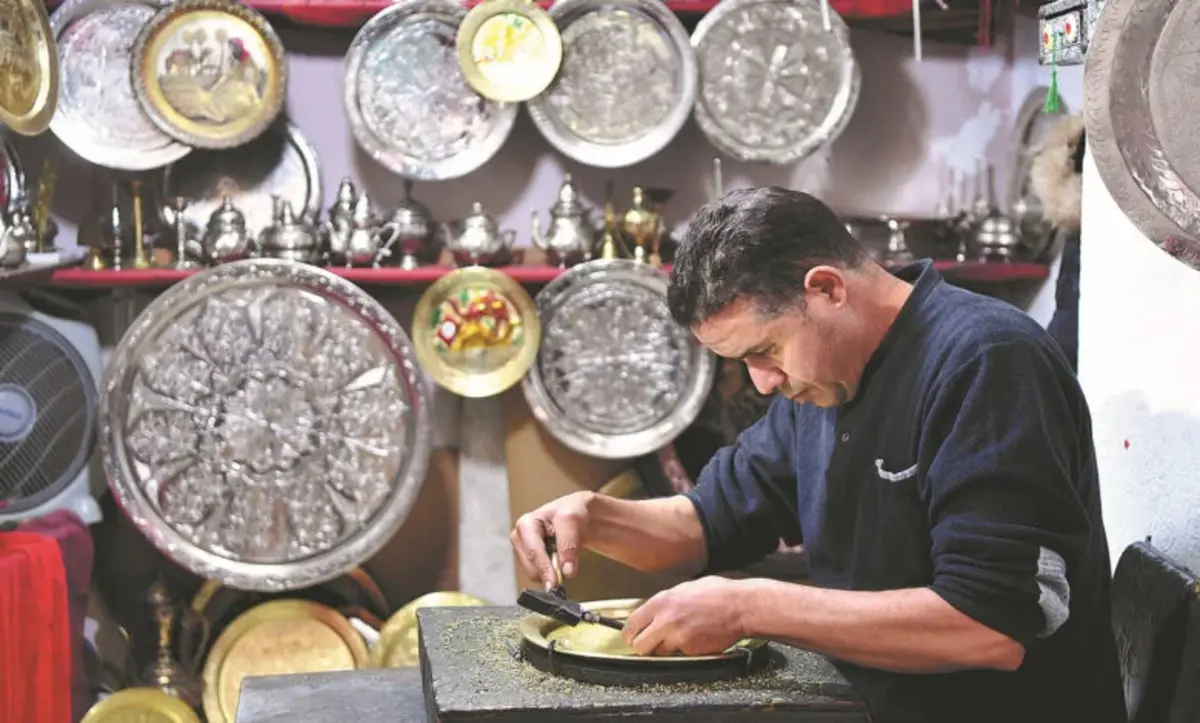In a significant nod to cultural heritage, UNESCO recently added the age-old tradition of metal engraving to its esteemed list of intangible heritage. This recognition brings to the forefront artisans like Mohamed Amine Htiouich, a 37-year-old Tunisian dedicated to preserving this ancient craft. Let’s delve into the world of metal engraving, exploring its rich history, challenges faced by local artisans, and the impact of UNESCO’s acknowledgment.
The Art of Metal Engraving
A Time-Honored Tradition
Metal engraving has been practiced across North Africa and the Middle East for centuries, with techniques passed down through generations. Mohamed Amine Htiouich, starting as a teenager, now trains the next generation in the ancient art, specializing in manually cutting words or symbols into jewelry and household objects.
UNESCO’s Recognition
Last month, UNESCO added metal engraving to its intangible heritage list, committing to preserving this exceptional craft. The designation is a testament to the aesthetic, religious, and cultural significance embedded in the exquisite works created by local craftsmen.
Challenges Faced by Local Artisans
Undervalued at Home
While gaining recognition abroad, metal engraving remains undervalued in its home countries. The lack of government support poses challenges for artisans, raising concerns about the potential disappearance of this rich tradition.
Short Apprenticeships
Artisans often face short apprenticeships, lasting only three months. Chiheb Eddine Ben Jabballah, a 68-year-old craftsman, notes that it takes at least two years to learn all the techniques of engraving. The brevity of apprenticeships contributes to the scarcity of skilled craftsmen.
Impact Beyond Borders
International Recognition
In Morocco, Abdelilah Mounir believes UNESCO’s recognition will boost tourism and commerce, offering international publicity. However, in some regions like Libya, the lack of government support hampers the development of this ancient craft.
Scarcity of Craftsmen
Mohamed Moumni from Morocco emphasizes the scarcity of skilled craftsmen, a challenge even in a tourist destination. Public initiatives are sparse in Algeria, yet the demand for engraved metal remains high.
The Magnificent Trade
Local Specialties
Each region has its own specialties, ranging from gold jewelry in Tlemcen to silver rings, necklaces, and bracelets in Kabylia and Aures. Despite the challenges, craftsmen like Walid Sellami from Algeria find pride in the magnificence of their trade.
Ancestral Pride
Walid Sellami notes that the UNESCO designation won’t change much practically, but it brings pride and recognition to an ancestral custom. The artistry of metal engraving, even in the face of challenges, continues to captivate and contribute to the cultural richness of these regions.
Jotting it down
As we celebrate UNESCO’s acknowledgment of metal engraving as intangible heritage, it becomes imperative to address the challenges faced by local artisans. Preserving this centuries-old tradition requires not only international recognition but also concerted efforts at the local level to ensure the continuity of this magnificent craft. Let’s appreciate the dedication of artisans like Mohamed Amine Htiouich and work towards sustaining the legacy of metal engraving for generations to come.







